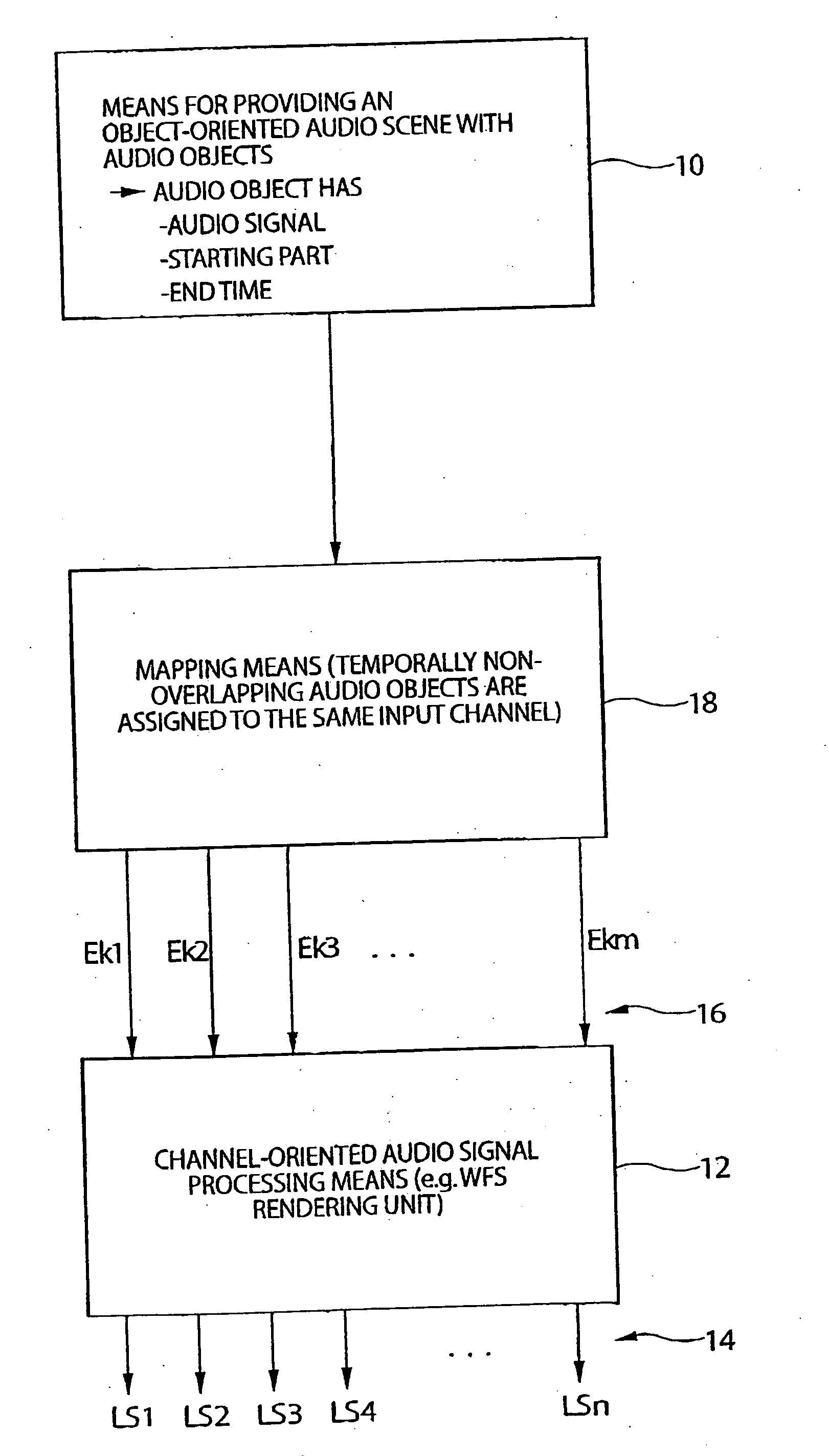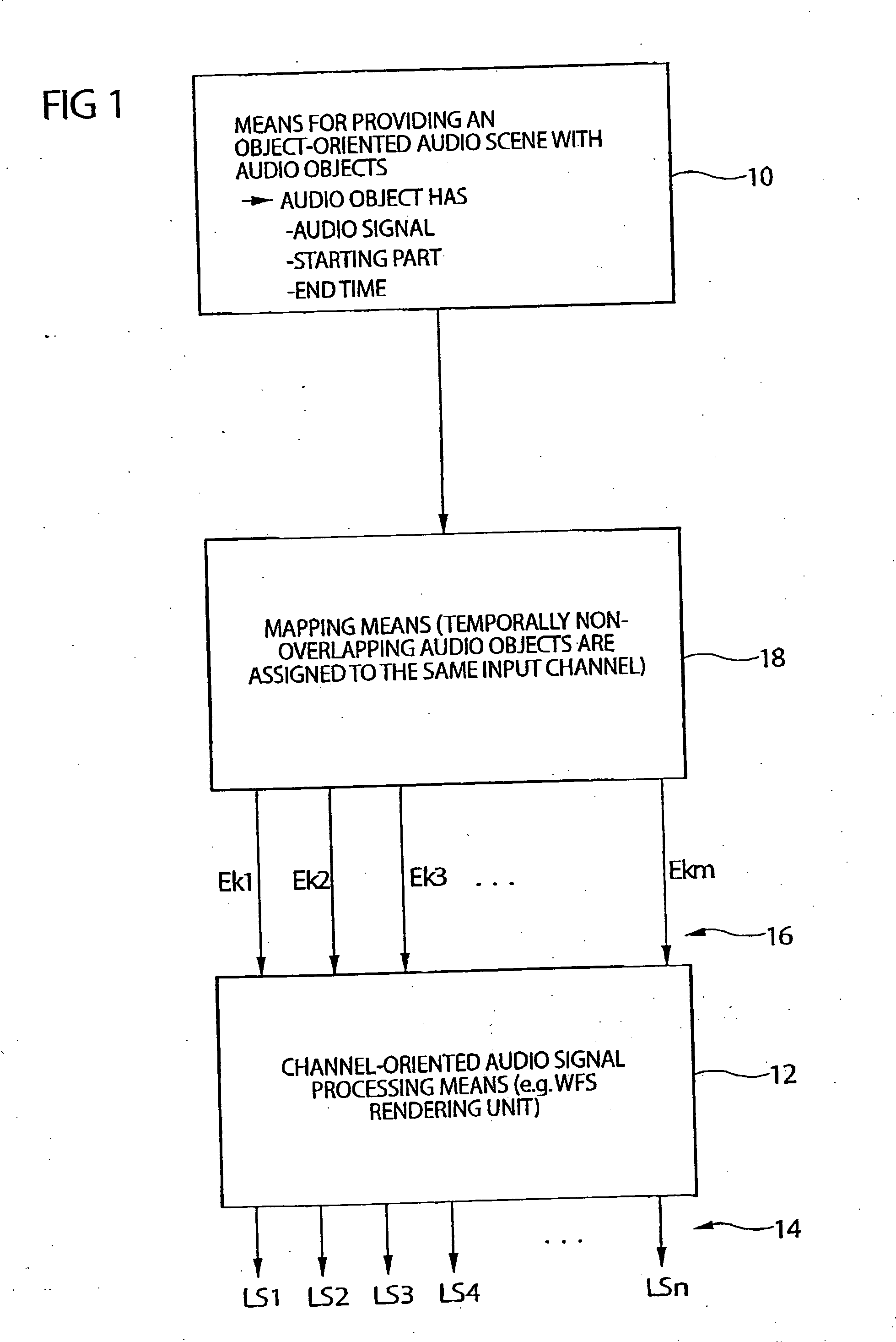Apparatus and method for generating, storing, or editing an audio representation of an audio scene
- Summary
- Abstract
- Description
- Claims
- Application Information
AI Technical Summary
Benefits of technology
Problems solved by technology
Method used
Image
Examples
Embodiment Construction
[0051]FIG. 1 shows a block circuit diagram of an inventive apparatus for generating an audio representation of an audio scene. The inventive apparatus includes means 10 for providing an object-oriented description of the audio scene, wherein the object-oriented description of the audio scene includes a plurality of audio objects, wherein an audio object is associated with at least an audio signal, a starting time instant, and an end time instant. The inventive apparatus further includes audio processing means 12 for generating a plurality of speaker signals LSi 14, which is channel-oriented and generates the plurality of speaker signals 14 from a plurality of input channels EKi. Between the provision means 10 and the channel-oriented audio signal processing means, which is, for example, formed as WFS rendering unit, there are mapping means 18 for mapping the object-oriented description of the audio scene to a plurality of input channels 16 of the channel-oriented audio signal proces...
PUM
 Login to View More
Login to View More Abstract
Description
Claims
Application Information
 Login to View More
Login to View More - R&D
- Intellectual Property
- Life Sciences
- Materials
- Tech Scout
- Unparalleled Data Quality
- Higher Quality Content
- 60% Fewer Hallucinations
Browse by: Latest US Patents, China's latest patents, Technical Efficacy Thesaurus, Application Domain, Technology Topic, Popular Technical Reports.
© 2025 PatSnap. All rights reserved.Legal|Privacy policy|Modern Slavery Act Transparency Statement|Sitemap|About US| Contact US: help@patsnap.com



